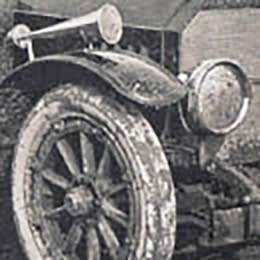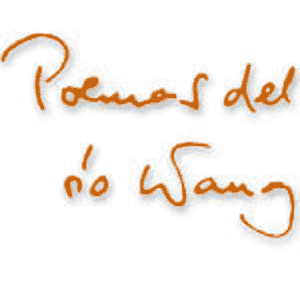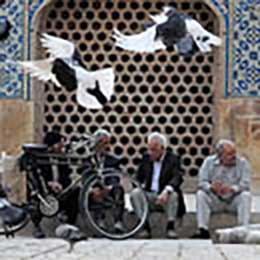| La puerta de la casa da a la plaza principal de Lwów; su patios, con unos túneles ratoneros de interconexión, se abren paso al fondo hasta la calle de la Judería. El edificio medieval convertido en el siglo XVI en una casa de estilo renacentista lo compró en 1610 la familia de comerciantes armenios Wartanowicz. Allí, en las ventanas que dan al patio, dejaron inscripciones en grabar —antiguo armenio— que hasta ahora no hemos conseguido que nos las traduzcan en los foros armenios donde hemos preguntado. También dejaron encima del arco una cabeza de león con un racimo de uvas en la boca (esta foto no nos salió bien, pero habrá una próxima vez), lo que sugiere que el café polaco «Pod niebieską butelką – Під синьою фляжкою» (a la botella azul), decorado según el gusto Art Nouveau del Lemberg de la Monarquía, contempla una historia de varios siglos. Las puertas del gótico tardío alemán, los marcos armenios renacentistas de las ventanas, los pavimentos austro-húngaros, los carteles de estilo Art Nouveau polaco, los pasadizos tipo kommunalka soviéticos, los graffiti y las pegatinas ucranianas a favor de Bandera y Shukevich se superponen unos a otros y a la vez marcan claramente sus distancias. Y en la jamba derecha de la puerta, todavía, el testimonio persistente de la mezuzá. | |  The gate of the house overlooks the main square of Lwów, its interconnecting, mouse-hole-like inner courtyards finally outcrop in the Old Jewish street. The medieval building converted into a renaissance house in the 16th century was purchased in 1610 by the Armenian Wartanowicz merchant family. They left the Grabar – ancient Armenian – inscriptions on the windows of the patio, which hitherto in every Armenian forum they have been lazy to translate for us, as well as the lion’s head above the arch with a cluster of grapes in the mouth – this photo failed, but there will be a next time – suggesting that the Polish café “Pod niebieską butelką – Під синьою фляжкою” (To the Blue Bottle) established in the Art Nouveau style of the Monarchy’s Lemberg looks back to several centuries old precedents here. German Late Gothic gates, Armenian Renaissance window frames, Austro-Hungarian pavements, Polish Art Nouveau signboards, Soviet kommunalka lobbies, Ukrainian graffiti and stickers cheering Bandera and Shukevich layer on, mingle with and yet separate sharply from each other. And on the right doorpost still there is the trace of the mezuzah. The gate of the house overlooks the main square of Lwów, its interconnecting, mouse-hole-like inner courtyards finally outcrop in the Old Jewish street. The medieval building converted into a renaissance house in the 16th century was purchased in 1610 by the Armenian Wartanowicz merchant family. They left the Grabar – ancient Armenian – inscriptions on the windows of the patio, which hitherto in every Armenian forum they have been lazy to translate for us, as well as the lion’s head above the arch with a cluster of grapes in the mouth – this photo failed, but there will be a next time – suggesting that the Polish café “Pod niebieską butelką – Під синьою фляжкою” (To the Blue Bottle) established in the Art Nouveau style of the Monarchy’s Lemberg looks back to several centuries old precedents here. German Late Gothic gates, Armenian Renaissance window frames, Austro-Hungarian pavements, Polish Art Nouveau signboards, Soviet kommunalka lobbies, Ukrainian graffiti and stickers cheering Bandera and Shukevich layer on, mingle with and yet separate sharply from each other. And on the right doorpost still there is the trace of the mezuzah. |


 The gate of the house overlooks the main square of Lwów, its interconnecting, mouse-hole-like inner courtyards finally outcrop in the Old Jewish street. The medieval building converted into a renaissance house in the 16th century was purchased in 1610 by the Armenian Wartanowicz merchant family. They left the Grabar – ancient Armenian – inscriptions on the windows of the patio, which hitherto in every Armenian forum they have been lazy to translate for us, as well as the lion’s head above the arch with a cluster of grapes in the mouth – this photo failed, but there will be a next time – suggesting that the Polish café “Pod niebieską butelką – Під синьою фляжкою” (To the Blue Bottle) established in the Art Nouveau style of the Monarchy’s Lemberg looks back to several centuries old precedents here. German Late Gothic gates, Armenian Renaissance window frames, Austro-Hungarian pavements, Polish Art Nouveau signboards, Soviet kommunalka lobbies, Ukrainian graffiti and stickers cheering Bandera and Shukevich layer on, mingle with and yet separate sharply from each other. And on the right doorpost still there is the trace of the mezuzah.
The gate of the house overlooks the main square of Lwów, its interconnecting, mouse-hole-like inner courtyards finally outcrop in the Old Jewish street. The medieval building converted into a renaissance house in the 16th century was purchased in 1610 by the Armenian Wartanowicz merchant family. They left the Grabar – ancient Armenian – inscriptions on the windows of the patio, which hitherto in every Armenian forum they have been lazy to translate for us, as well as the lion’s head above the arch with a cluster of grapes in the mouth – this photo failed, but there will be a next time – suggesting that the Polish café “Pod niebieską butelką – Під синьою фляжкою” (To the Blue Bottle) established in the Art Nouveau style of the Monarchy’s Lemberg looks back to several centuries old precedents here. German Late Gothic gates, Armenian Renaissance window frames, Austro-Hungarian pavements, Polish Art Nouveau signboards, Soviet kommunalka lobbies, Ukrainian graffiti and stickers cheering Bandera and Shukevich layer on, mingle with and yet separate sharply from each other. And on the right doorpost still there is the trace of the mezuzah.




















































Add comment